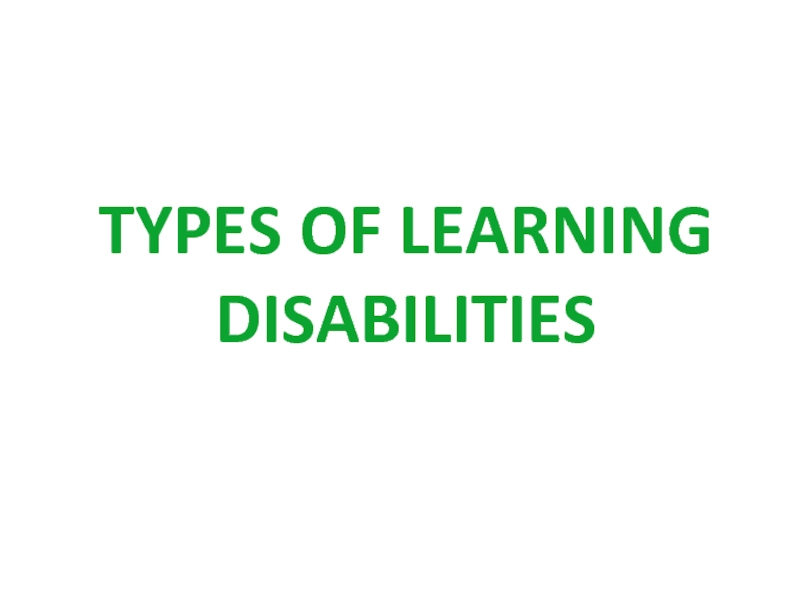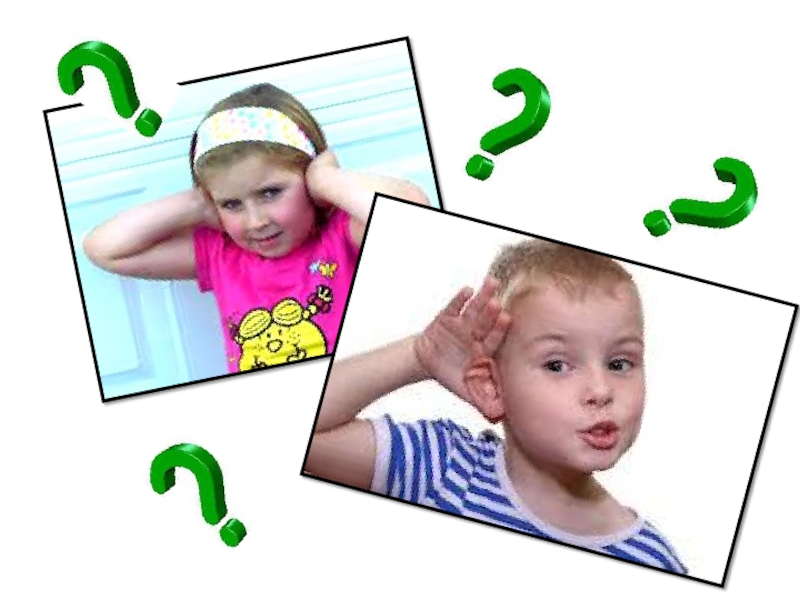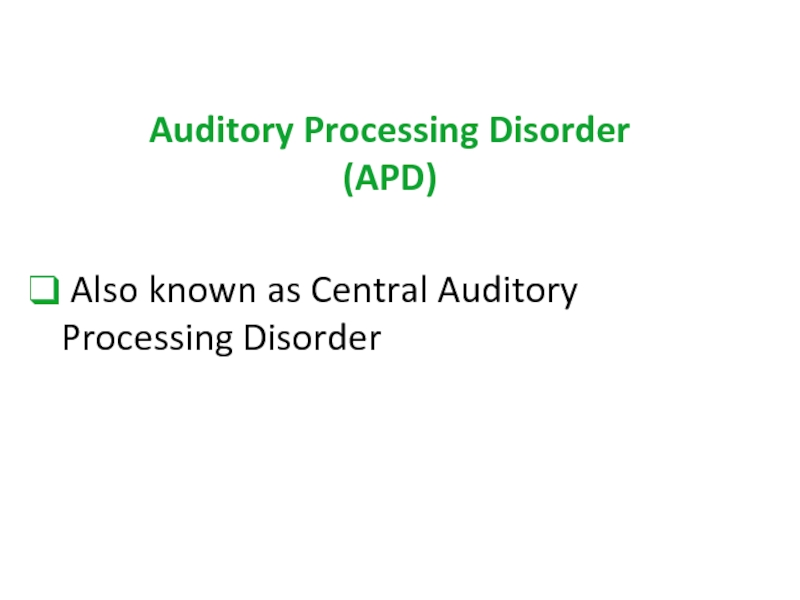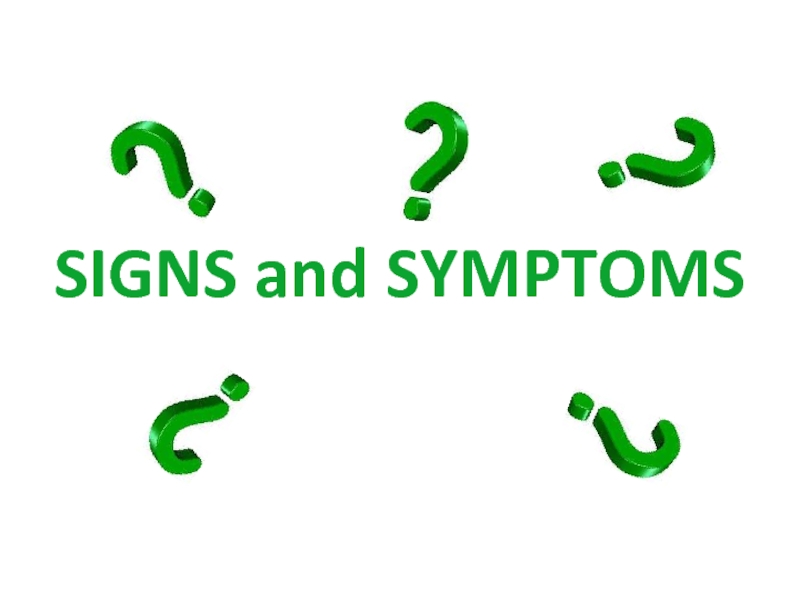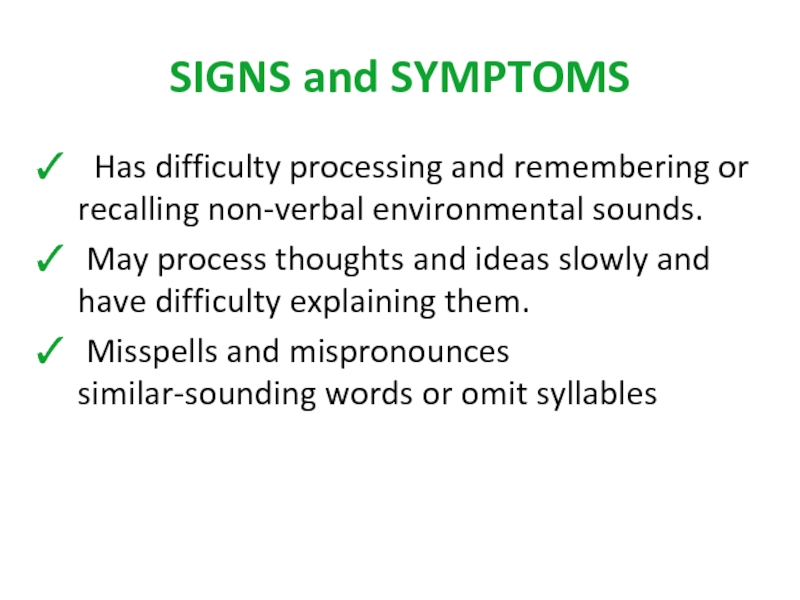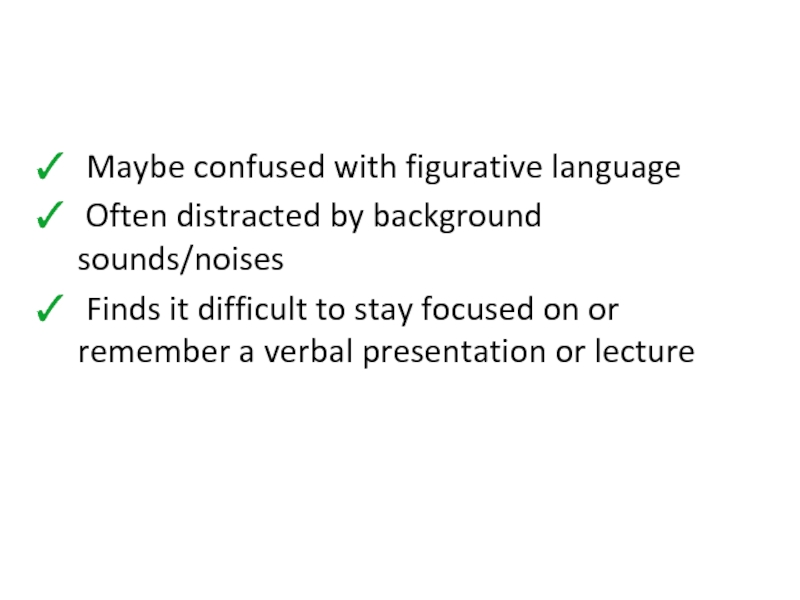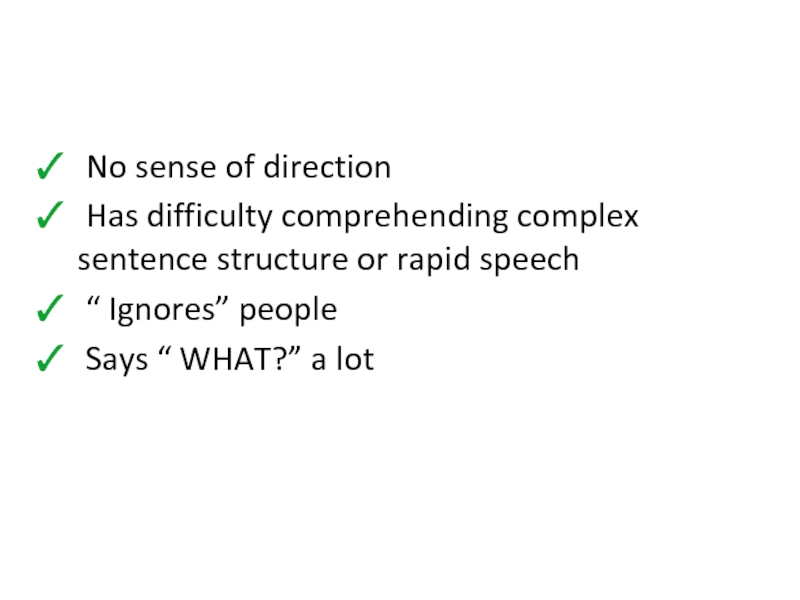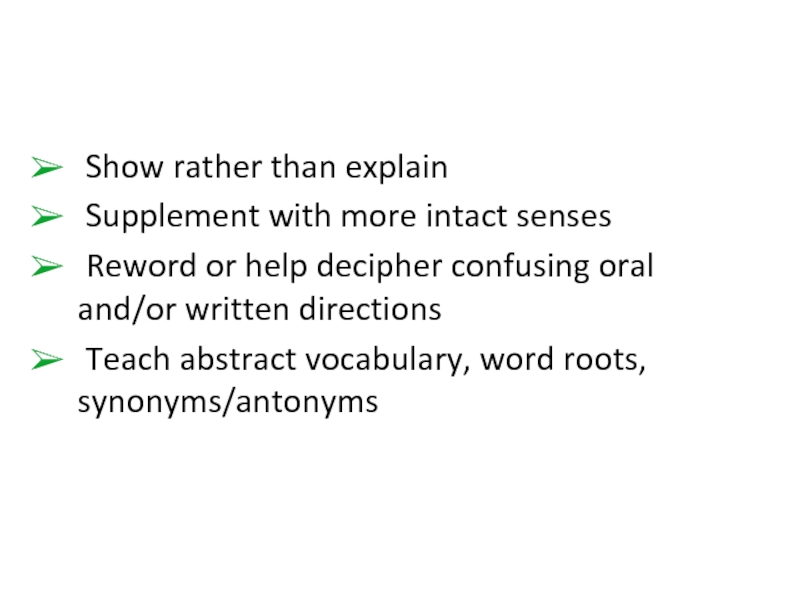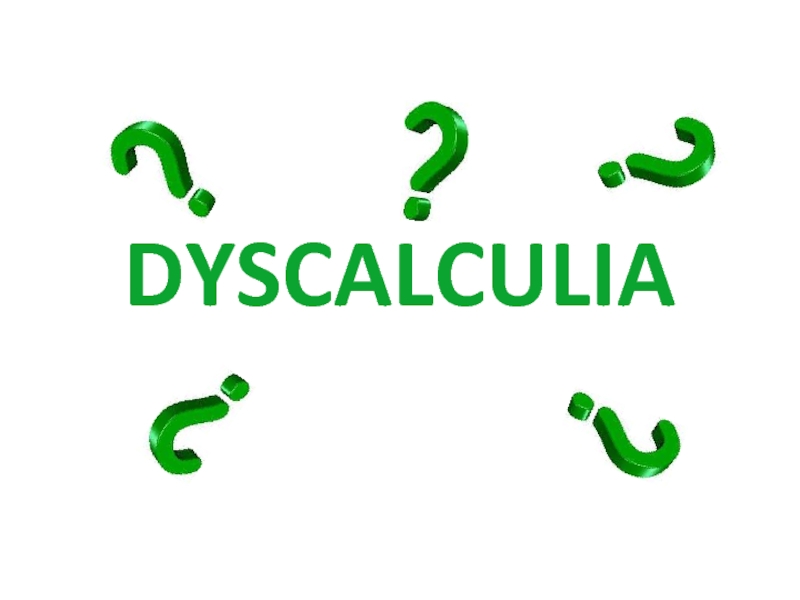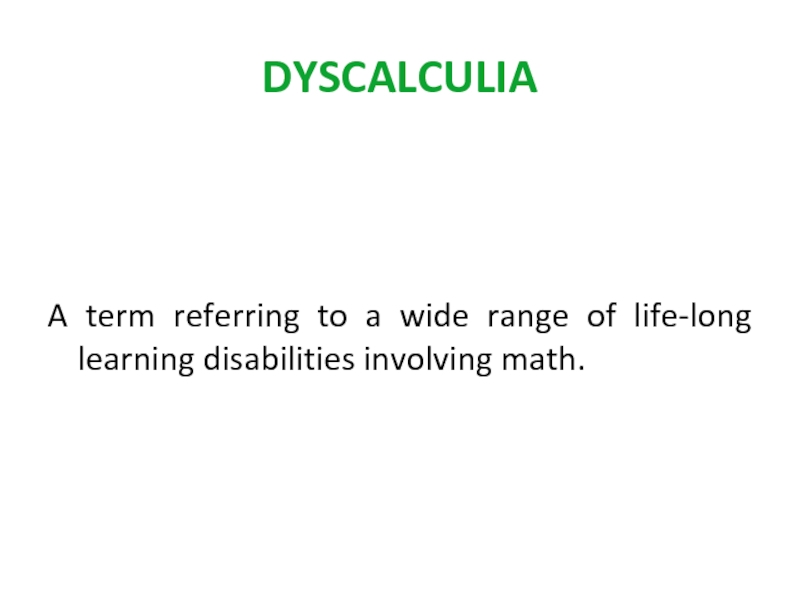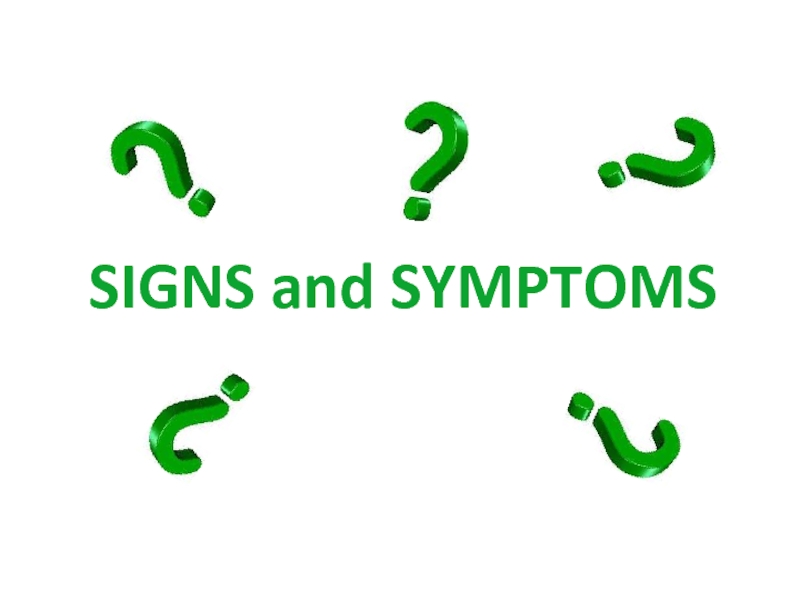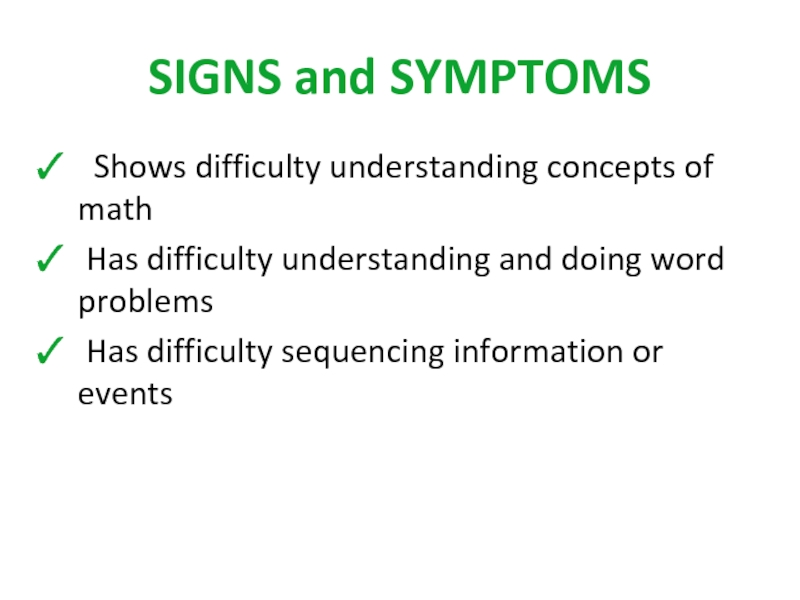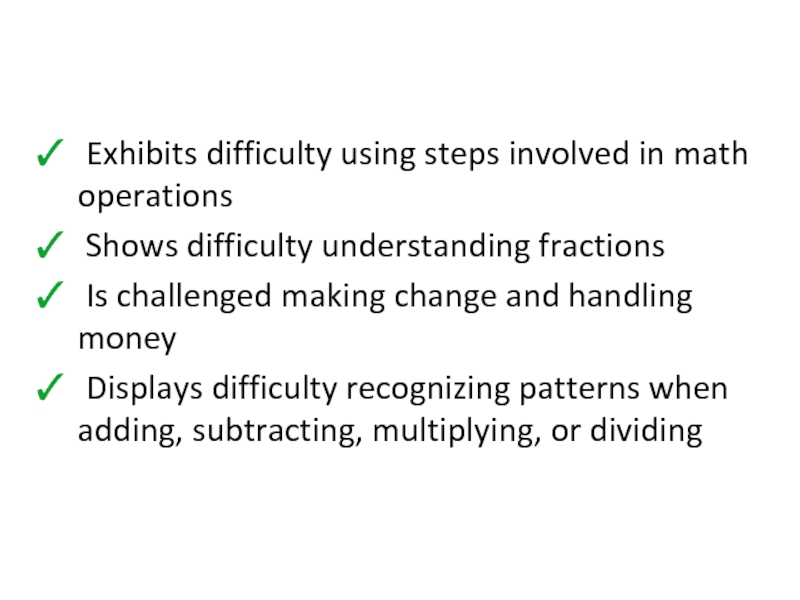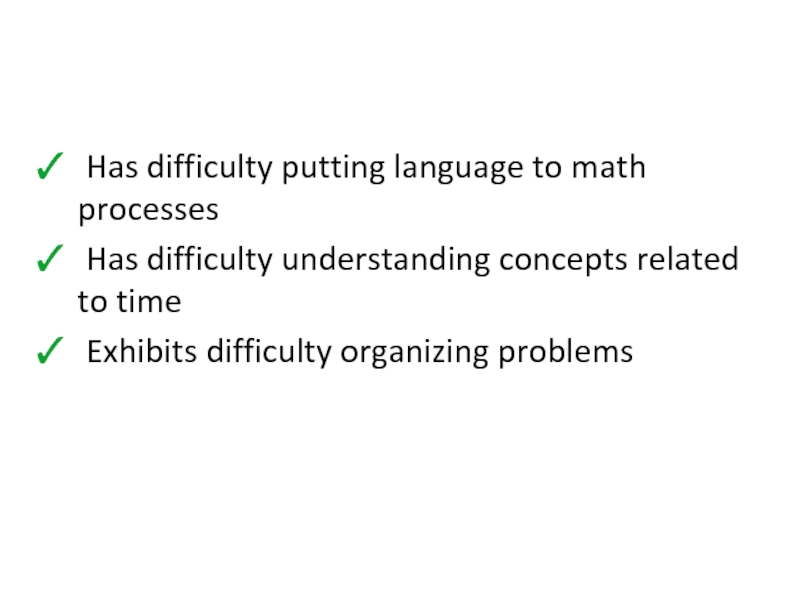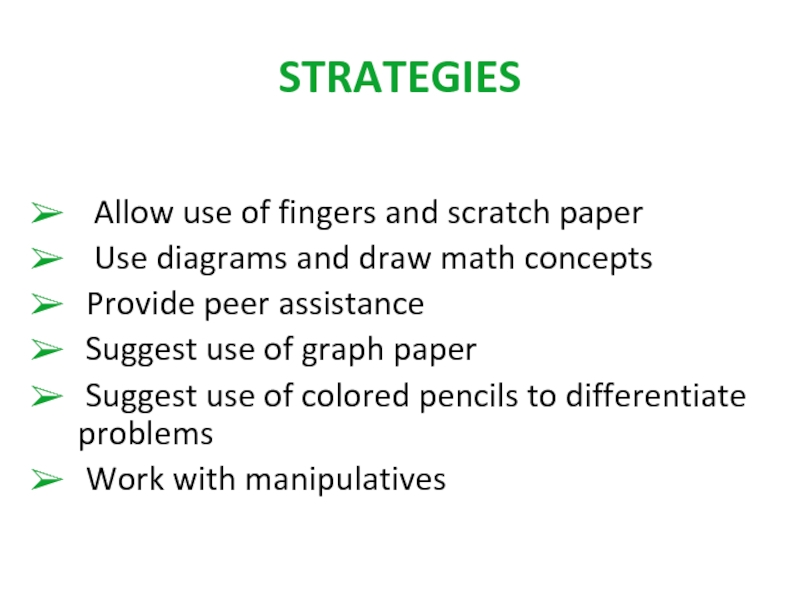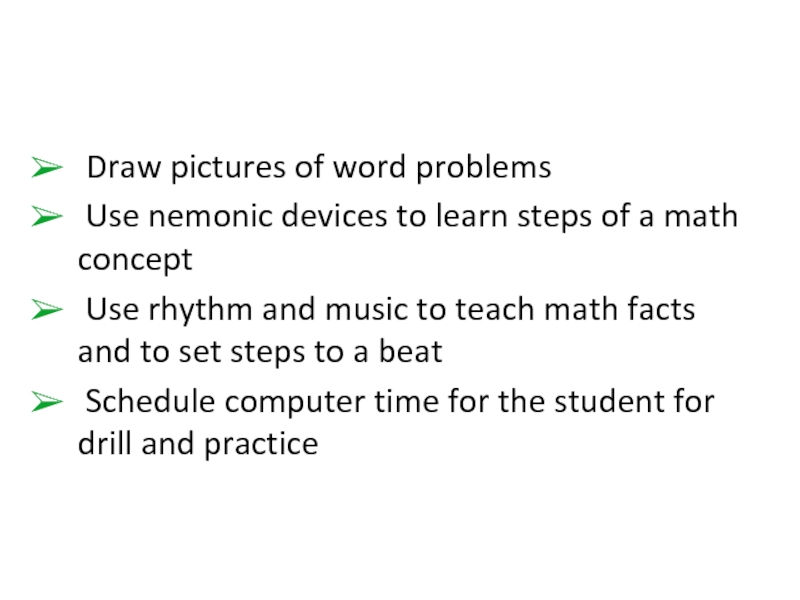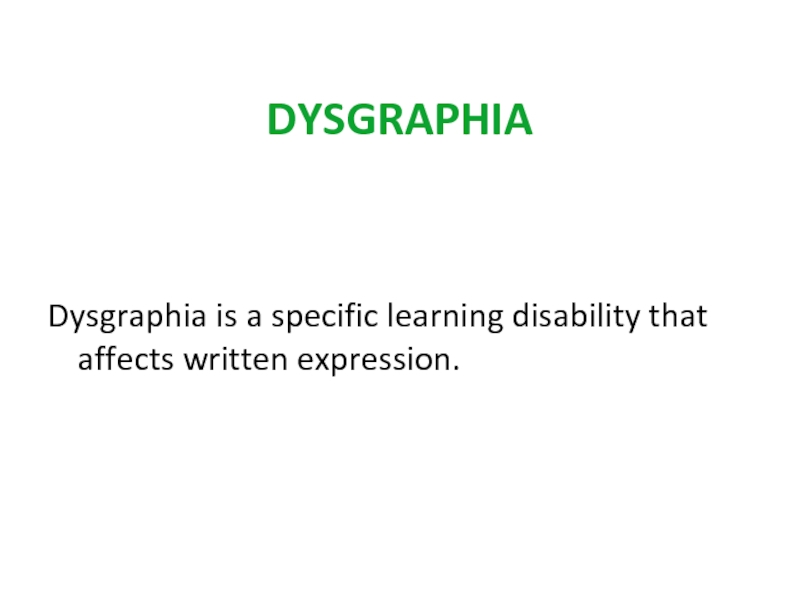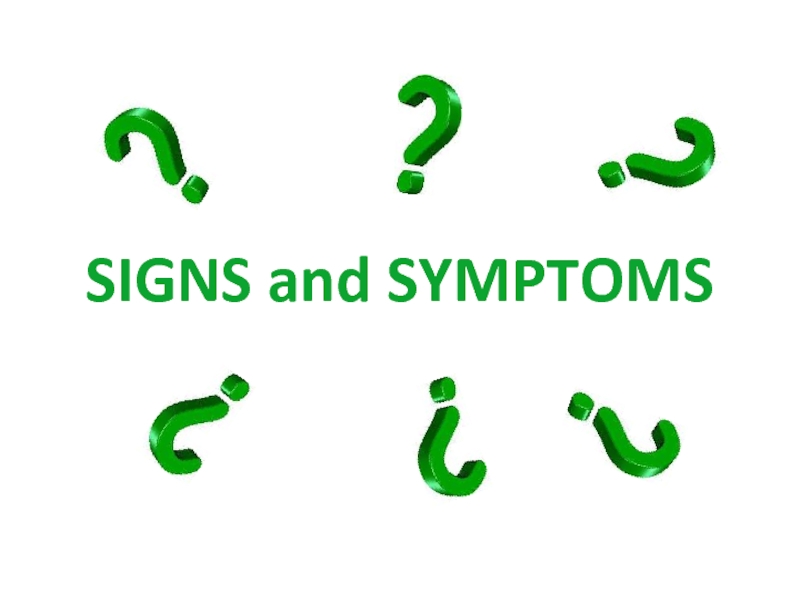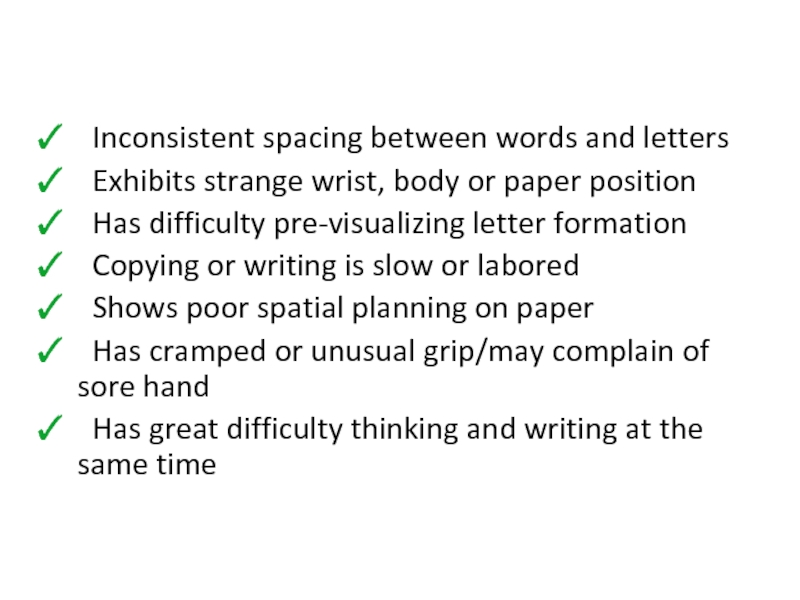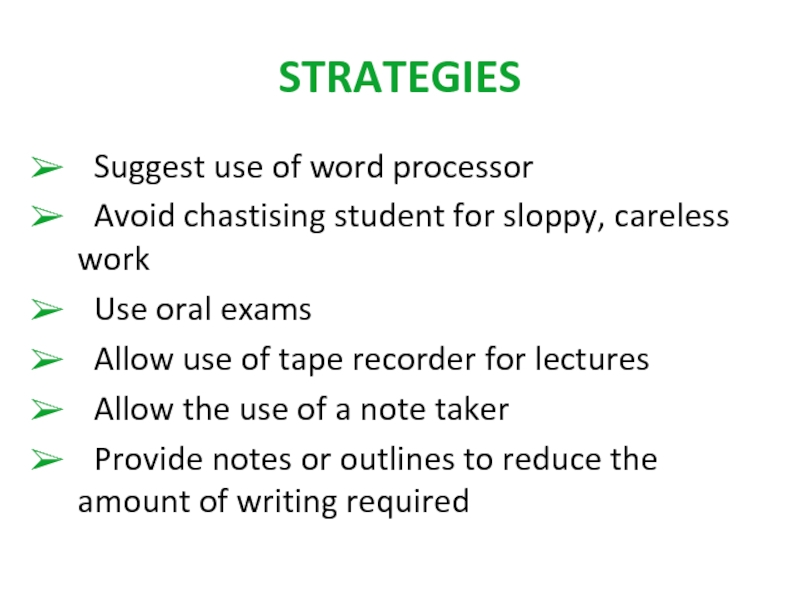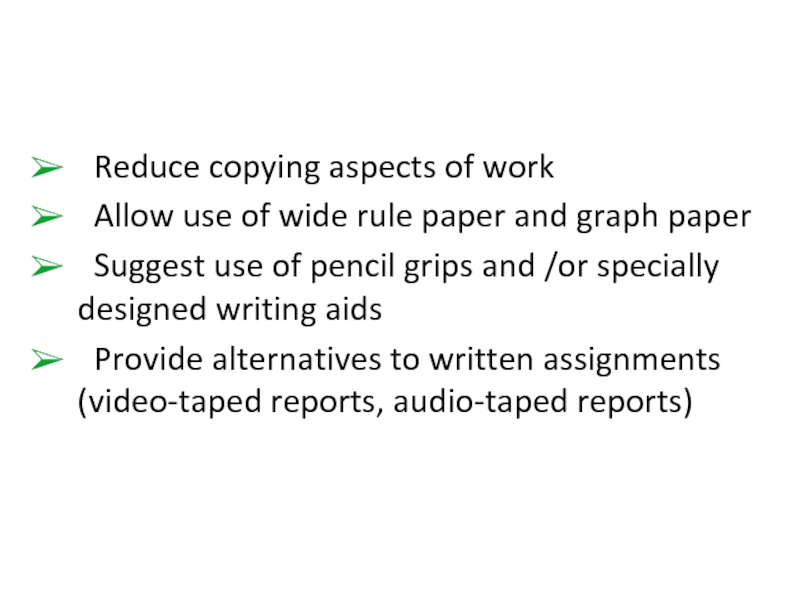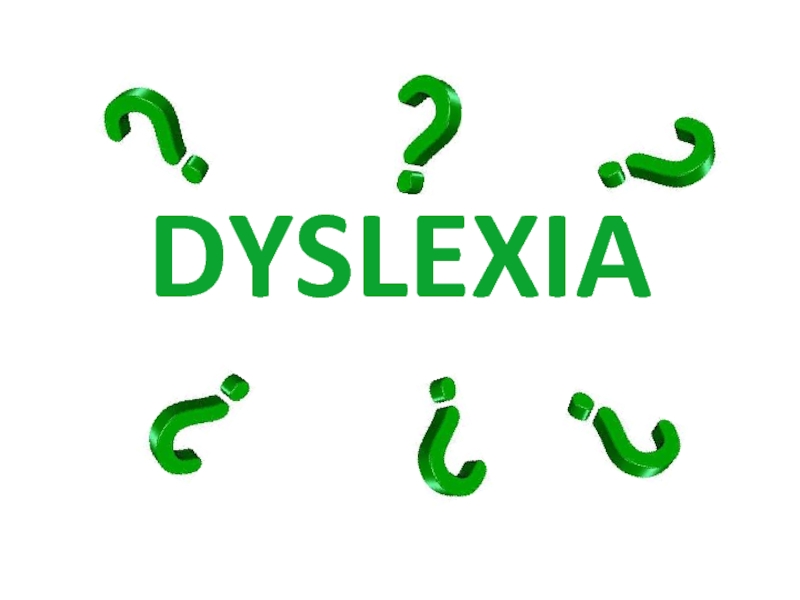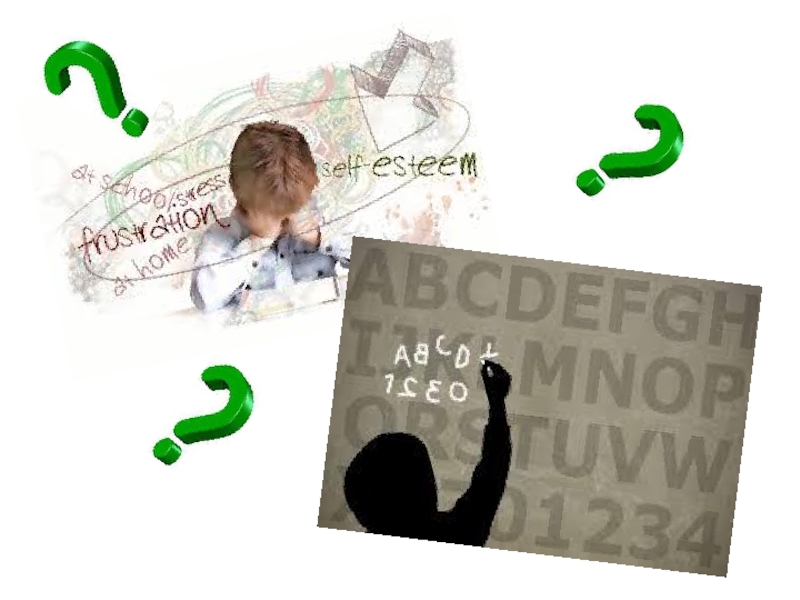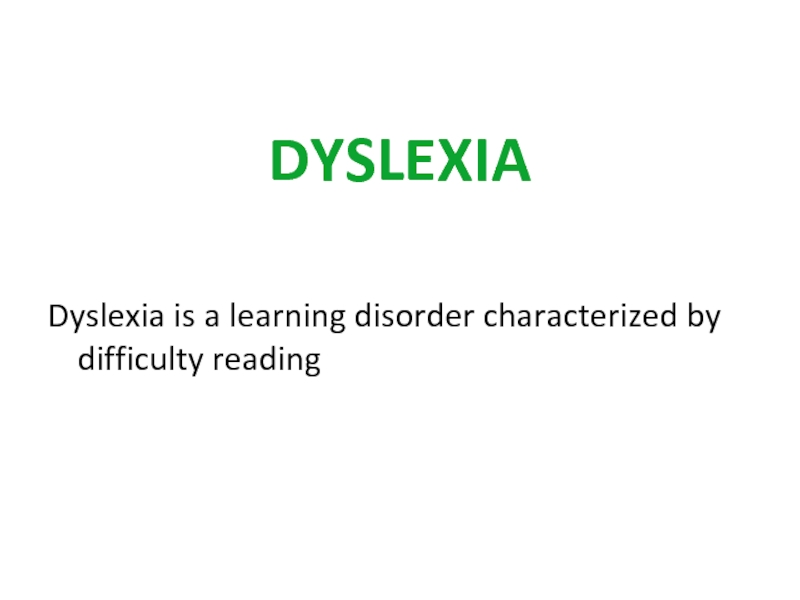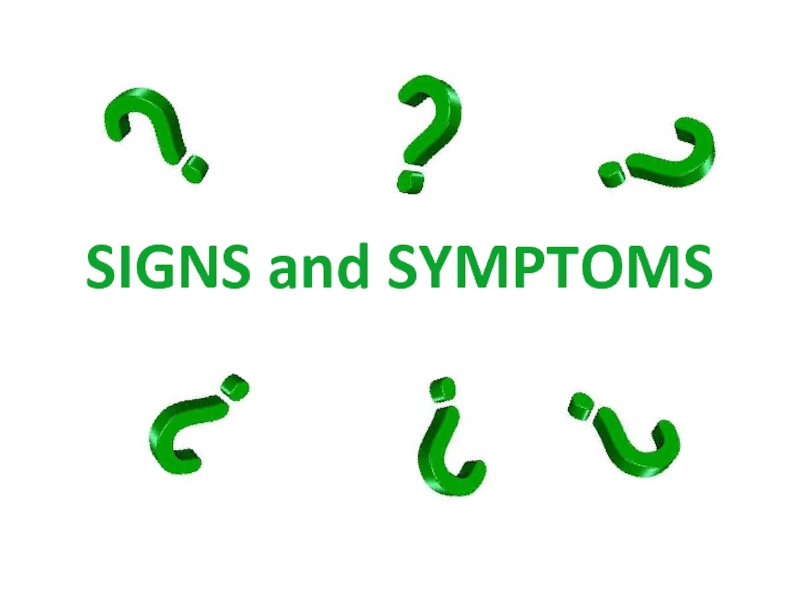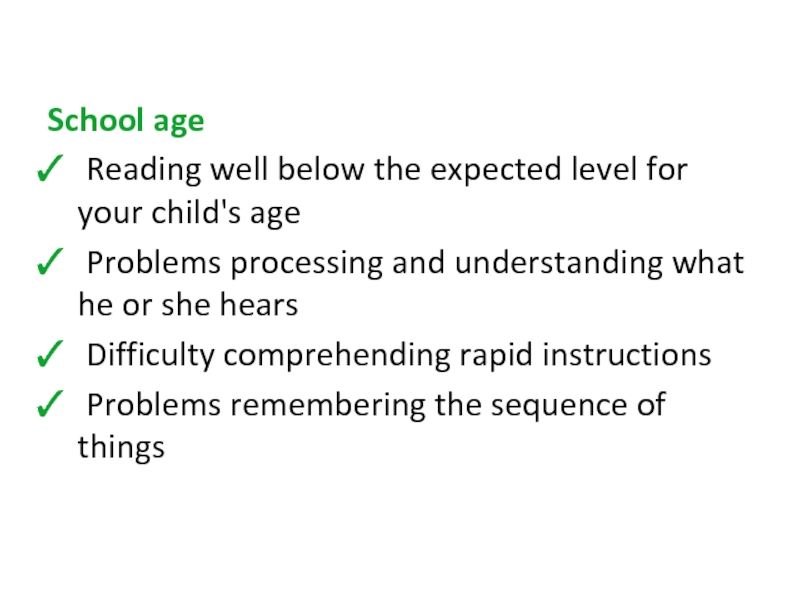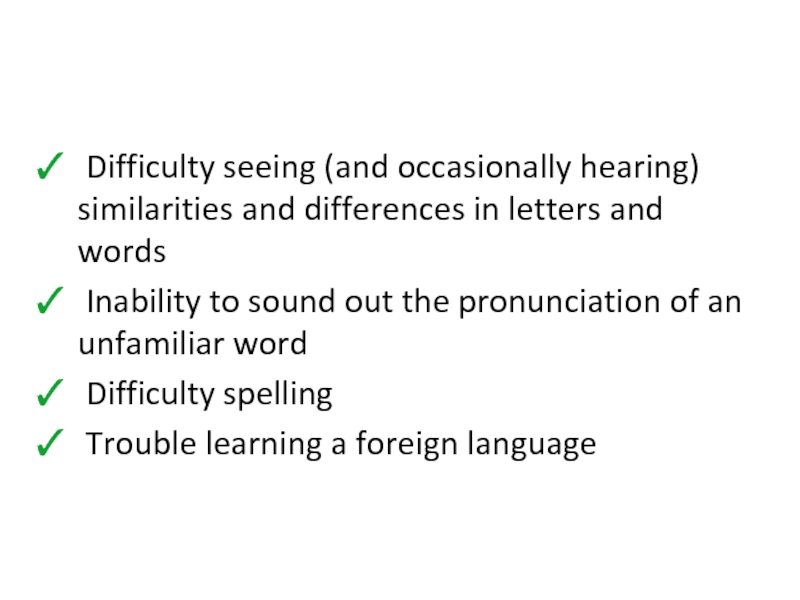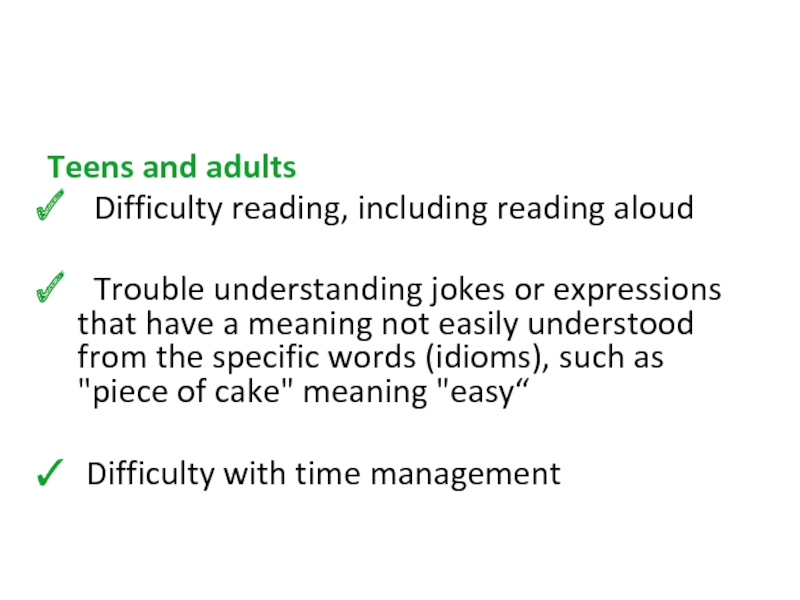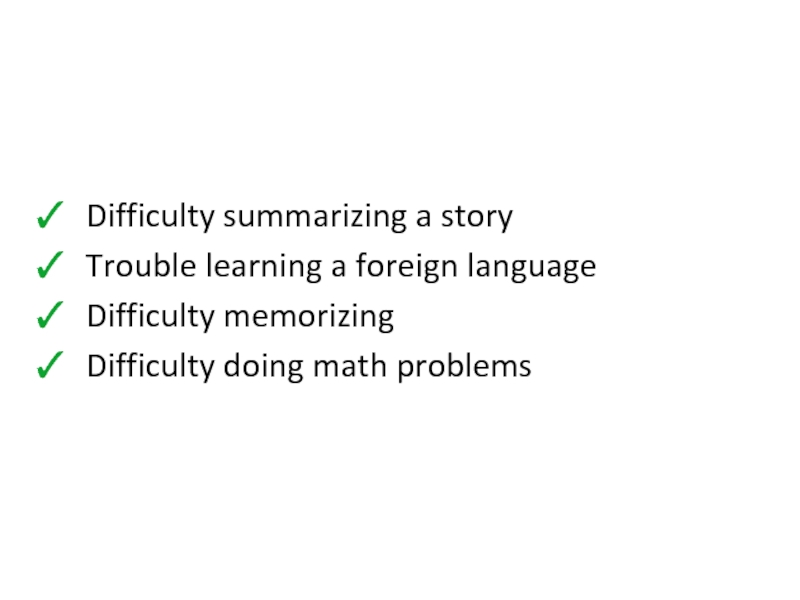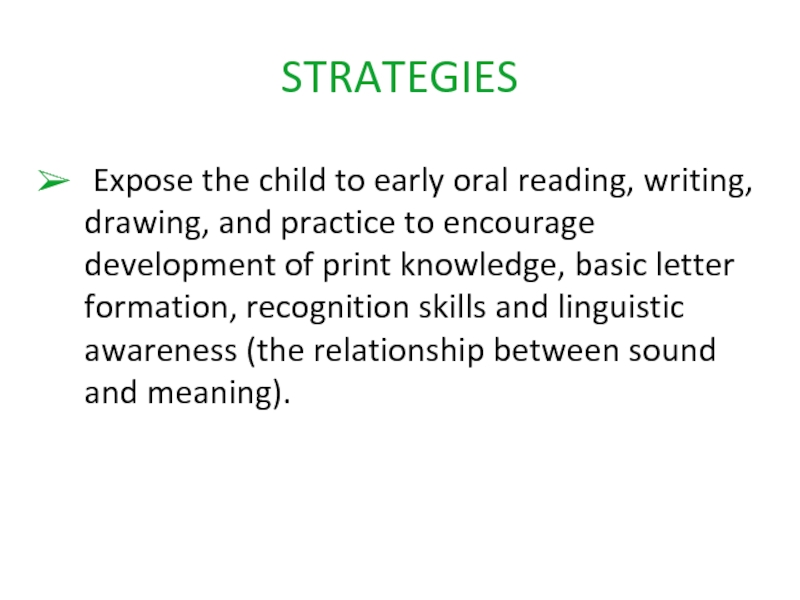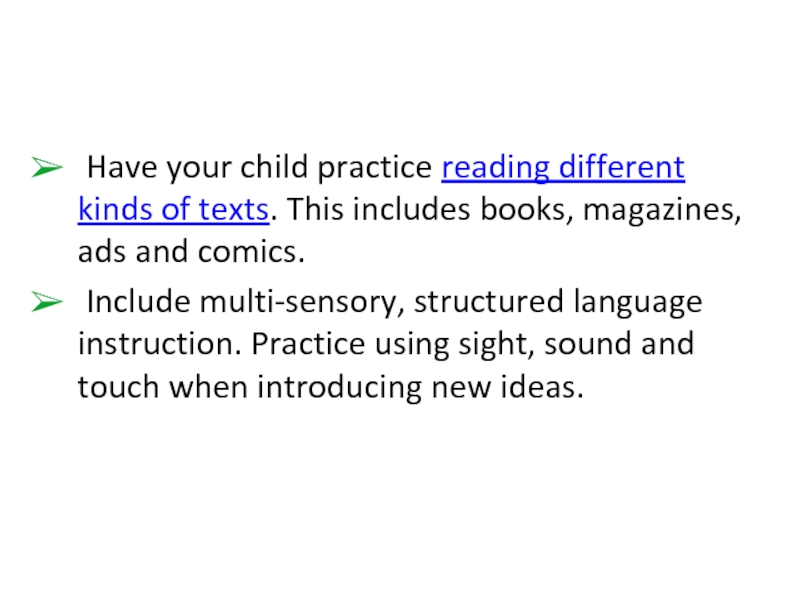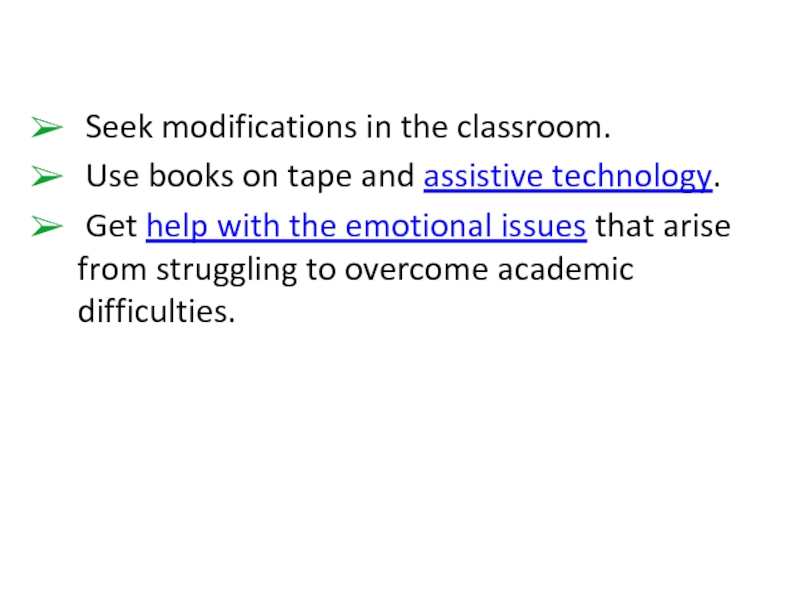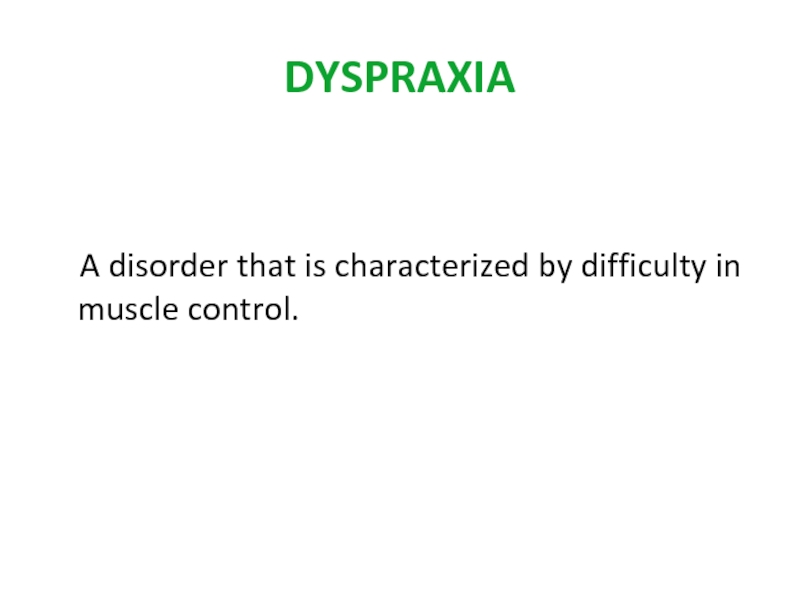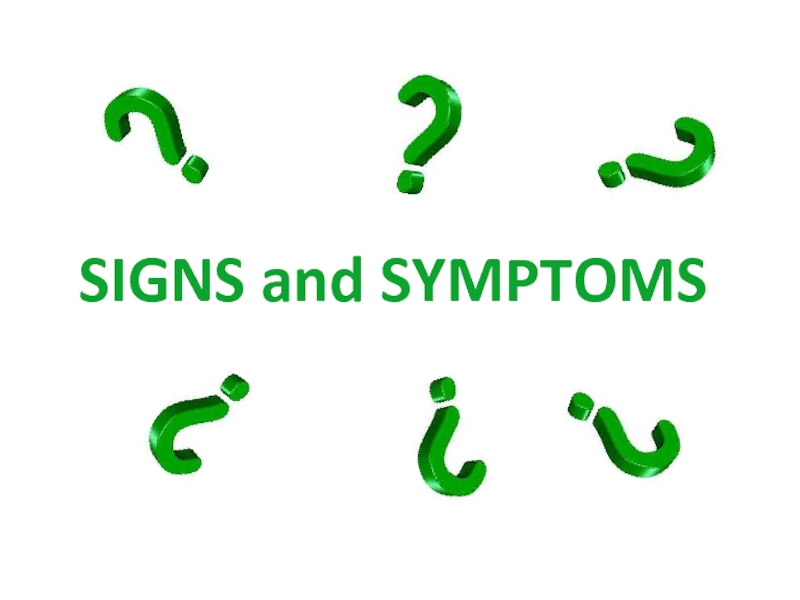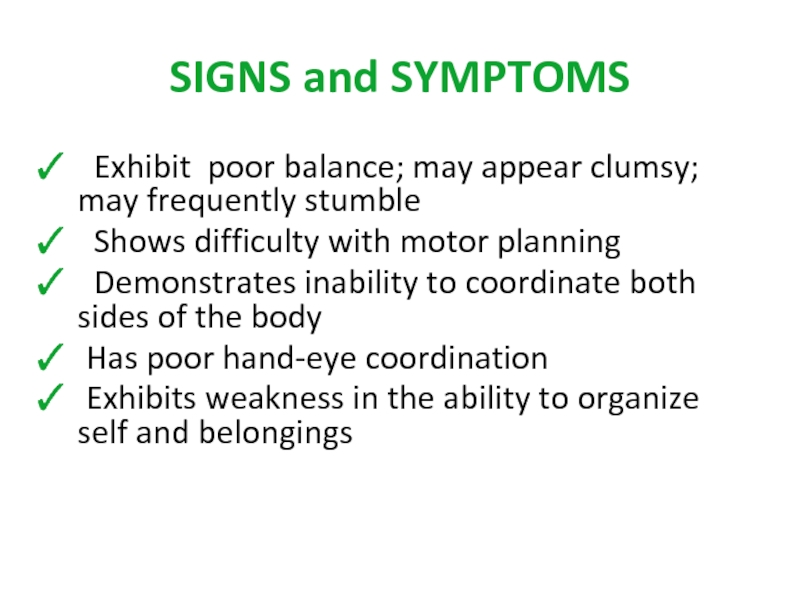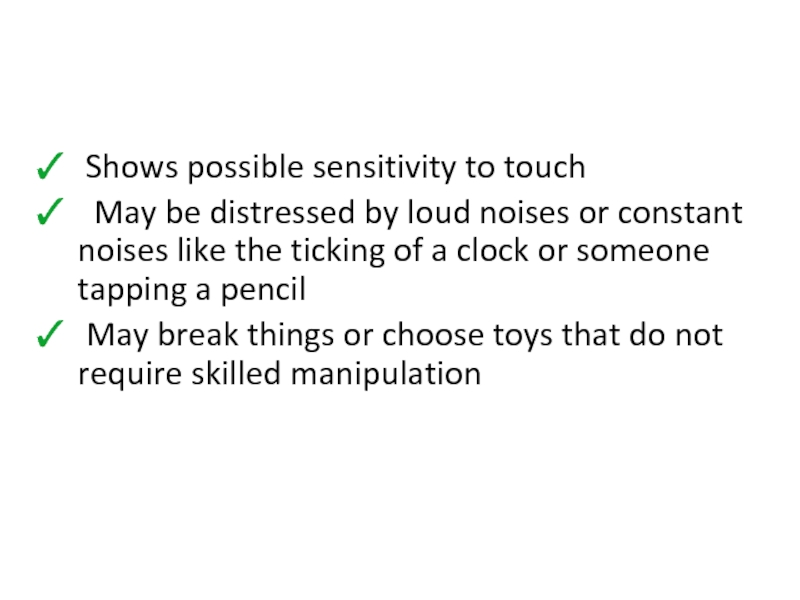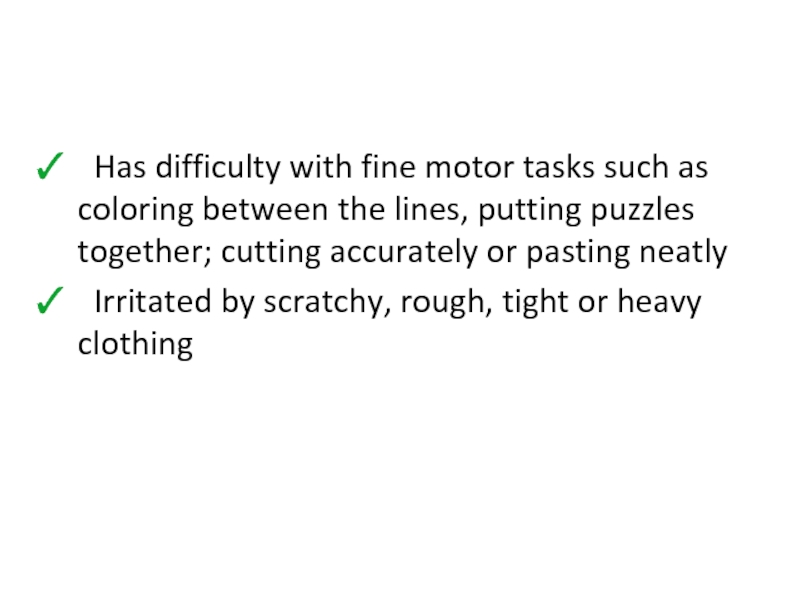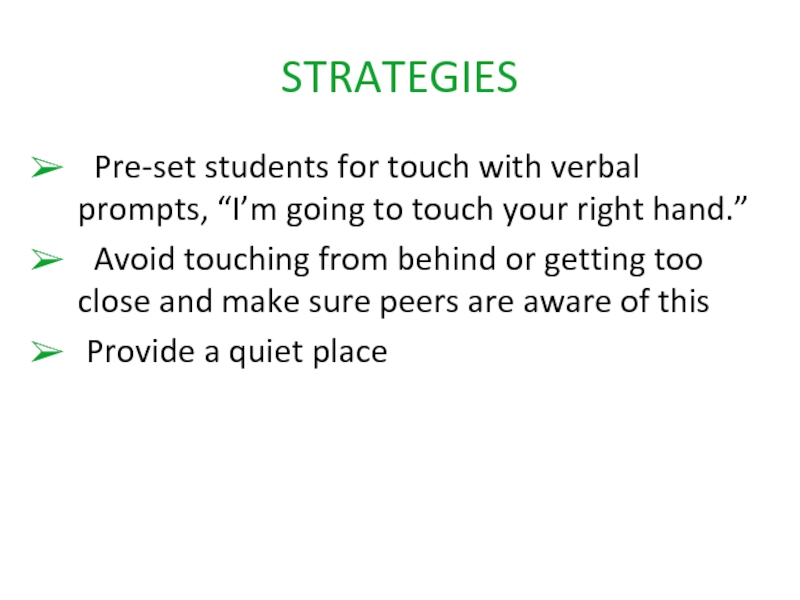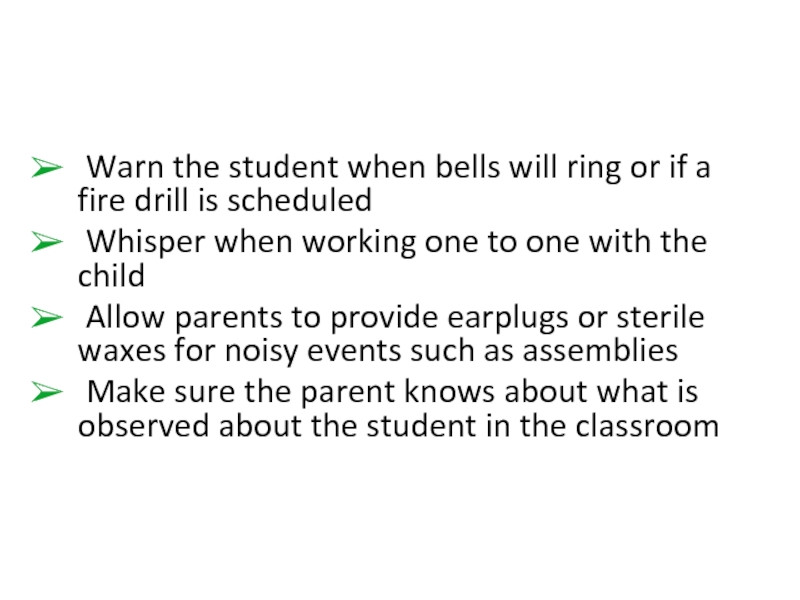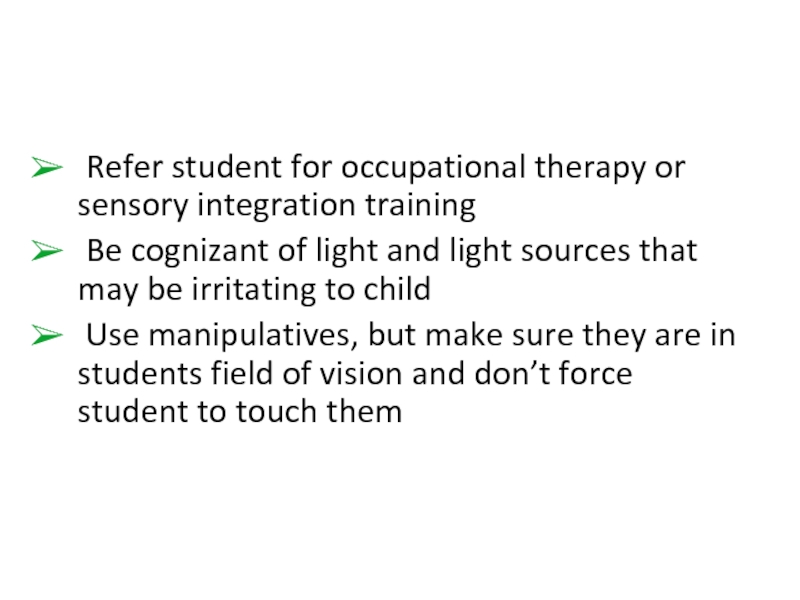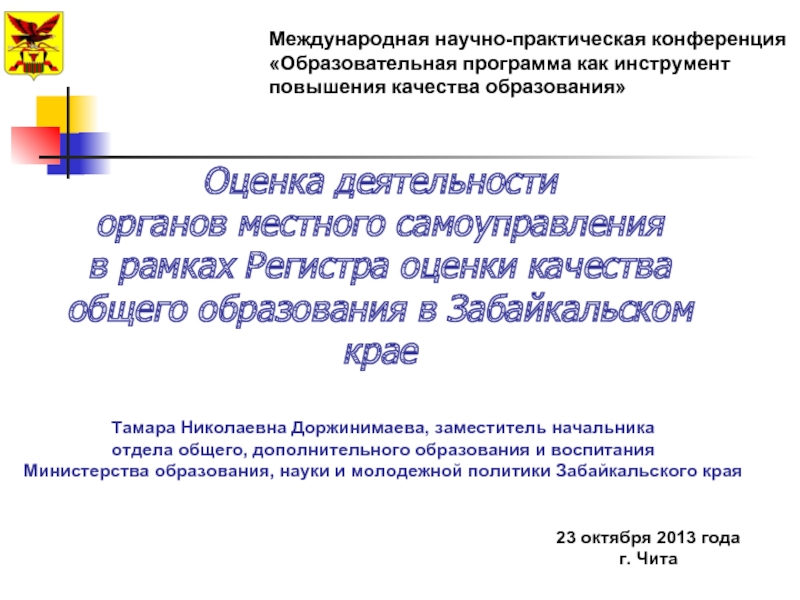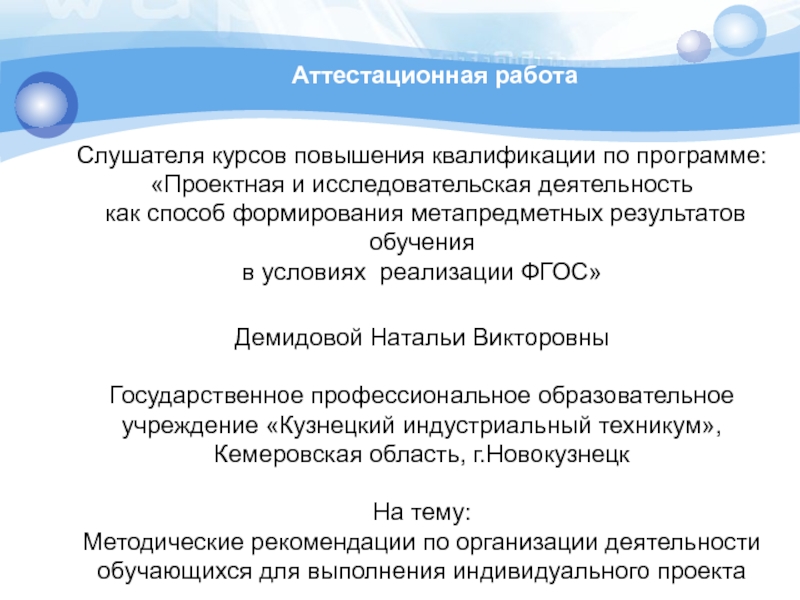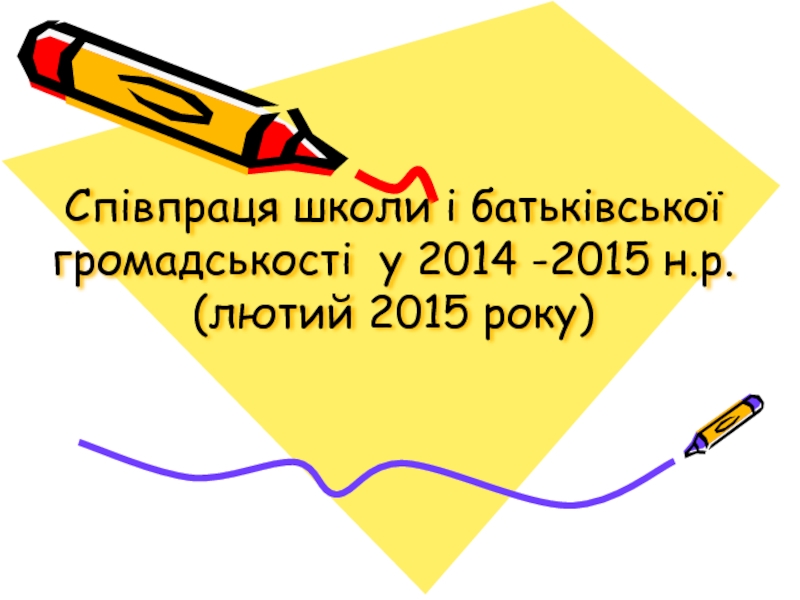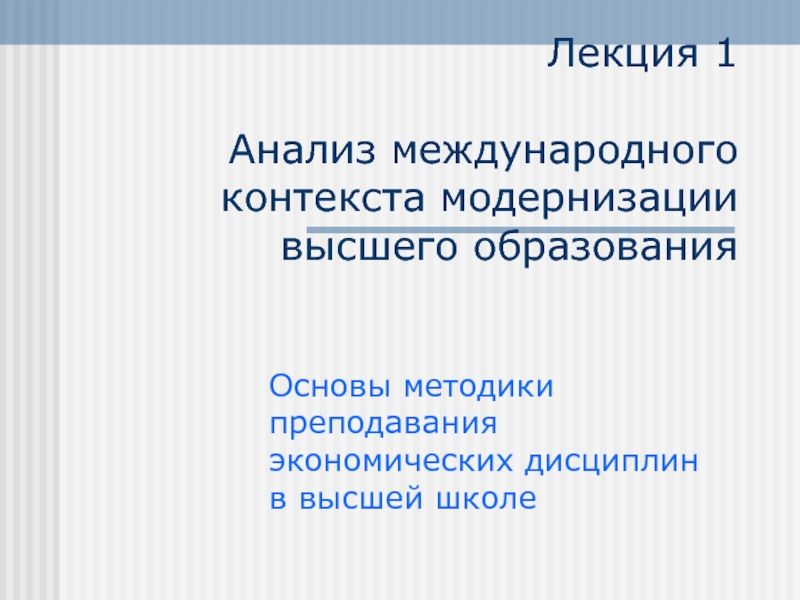- Главная
- Разное
- Дизайн
- Бизнес и предпринимательство
- Аналитика
- Образование
- Развлечения
- Красота и здоровье
- Финансы
- Государство
- Путешествия
- Спорт
- Недвижимость
- Армия
- Графика
- Культурология
- Еда и кулинария
- Лингвистика
- Английский язык
- Астрономия
- Алгебра
- Биология
- География
- Детские презентации
- Информатика
- История
- Литература
- Маркетинг
- Математика
- Медицина
- Менеджмент
- Музыка
- МХК
- Немецкий язык
- ОБЖ
- Обществознание
- Окружающий мир
- Педагогика
- Русский язык
- Технология
- Физика
- Философия
- Химия
- Шаблоны, картинки для презентаций
- Экология
- Экономика
- Юриспруденция
TYPES OF LEARNING DISABILITIES презентация
Содержание
- 1. TYPES OF LEARNING DISABILITIES
- 2. Auditory Processing Disorder (APD)
- 4. Auditory Processing Disorder (APD) Also known as Central Auditory Processing Disorder
- 5. SIGNS and SYMPTOMS
- 6. SIGNS and SYMPTOMS Has difficulty processing
- 7. Maybe confused with figurative language
- 8. No sense of direction Has
- 9. STRATEGIES
- 10. Show rather than explain Supplement
- 11. Vary pitch and tone of voice,
- 12. DYSCALCULIA
- 13. DYSCALCULIA
- 14. SIGNS and SYMPTOMS
- 15. SIGNS and SYMPTOMS Shows difficulty understanding
- 16. Exhibits difficulty using steps involved in
- 17. Has difficulty putting language to math
- 18. STRATEGIES
- 19. STRATEGIES Allow use of
- 20. Draw pictures of word problems
- 21. DYSGRAPHIA
- 22. DYSGRAPHIA Dysgraphia
- 23. SIGNS and SYMPTOMS
- 24. SIGNS and SYMPTOMS May have illegible
- 25. Inconsistent spacing between words and letters
- 26. STRATEGIES
- 27. STRATEGIES Suggest use of word processor
- 28. Reduce copying aspects of work
- 29. DYSLEXIA
- 31. DYSLEXIA Dyslexia is a learning disorder characterized by difficulty reading
- 32. SIGNS and SYMPTOMS
- 33. SIGNS and SYMPTOMS Before school Late
- 34. School age Reading well below the
- 35. Difficulty seeing (and occasionally hearing) similarities
- 36. Teens and adults Difficulty reading, including
- 37. Difficulty summarizing a story
- 38. STRATEGIES
- 39. STRATEGIES Expose the child to early
- 40. Have your child practice reading different kinds
- 41. Seek modifications in the classroom.
- 42. DYSPRAXIA
- 43. DYSPRAXIA
- 44. SIGNS and SYMPTOMS
- 45. SIGNS and SYMPTOMS Exhibit poor balance;
- 46. Shows possible sensitivity to touch
- 47. Has difficulty with fine motor tasks
- 48. STRATEGIES
- 49. STRATEGIES Pre-set students for touch with
- 50. Warn the student when bells will
- 51. Refer student for occupational therapy or
Слайд 6SIGNS and SYMPTOMS
Has difficulty processing and remembering or recalling non-verbal
environmental sounds.
May process thoughts and ideas slowly and have difficulty explaining them.
Misspells and mispronounces similar-sounding words or omit syllables
May process thoughts and ideas slowly and have difficulty explaining them.
Misspells and mispronounces similar-sounding words or omit syllables
Слайд 7 Maybe confused with figurative language
Often distracted by background sounds/noises
Finds it difficult to stay focused on or remember a verbal presentation or lecture
Слайд 8 No sense of direction
Has difficulty comprehending complex sentence structure
or rapid speech
“ Ignores” people
Says “ WHAT?” a lot
“ Ignores” people
Says “ WHAT?” a lot
Слайд 10 Show rather than explain
Supplement with more intact senses
Reword or help decipher confusing oral and/or written directions
Teach abstract vocabulary, word roots, synonyms/antonyms
Teach abstract vocabulary, word roots, synonyms/antonyms
Слайд 11 Vary pitch and tone of voice, alter pace, stress key
words
Ask specific questions
Allow them 5-6 seconds to respond (“think time”)
Have the student constantly verbalize concepts, vocabulary words, rules, etc.
Ask specific questions
Allow them 5-6 seconds to respond (“think time”)
Have the student constantly verbalize concepts, vocabulary words, rules, etc.
Слайд 13DYSCALCULIA
A term referring to a wide range
of life-long learning disabilities involving math.
Слайд 15SIGNS and SYMPTOMS
Shows difficulty understanding concepts of math
Has difficulty
understanding and doing word problems
Has difficulty sequencing information or events
Has difficulty sequencing information or events
Слайд 16 Exhibits difficulty using steps involved in math operations
Shows difficulty
understanding fractions
Is challenged making change and handling money
Displays difficulty recognizing patterns when adding, subtracting, multiplying, or dividing
Is challenged making change and handling money
Displays difficulty recognizing patterns when adding, subtracting, multiplying, or dividing
Слайд 17 Has difficulty putting language to math processes
Has difficulty understanding
concepts related to time
Exhibits difficulty organizing problems
Exhibits difficulty organizing problems
Слайд 19STRATEGIES
Allow use of fingers and scratch paper
Use diagrams
and draw math concepts
Provide peer assistance
Suggest use of graph paper
Suggest use of colored pencils to differentiate problems
Work with manipulatives
Provide peer assistance
Suggest use of graph paper
Suggest use of colored pencils to differentiate problems
Work with manipulatives
Слайд 20 Draw pictures of word problems
Use nemonic devices to learn
steps of a math concept
Use rhythm and music to teach math facts and to set steps to a beat
Schedule computer time for the student for drill and practice
Use rhythm and music to teach math facts and to set steps to a beat
Schedule computer time for the student for drill and practice
Слайд 24SIGNS and SYMPTOMS
May have illegible printing and cursive writing
Shows
inconsistencies:
Has unfinished words or letters, omitted words
Has unfinished words or letters, omitted words
Слайд 25 Inconsistent spacing between words and letters
Exhibits strange wrist, body
or paper position
Has difficulty pre-visualizing letter formation
Copying or writing is slow or labored
Shows poor spatial planning on paper
Has cramped or unusual grip/may complain of sore hand
Has great difficulty thinking and writing at the same time
Has difficulty pre-visualizing letter formation
Copying or writing is slow or labored
Shows poor spatial planning on paper
Has cramped or unusual grip/may complain of sore hand
Has great difficulty thinking and writing at the same time
Слайд 27STRATEGIES
Suggest use of word processor
Avoid chastising student for sloppy,
careless work
Use oral exams
Allow use of tape recorder for lectures
Allow the use of a note taker
Provide notes or outlines to reduce the amount of writing required
Use oral exams
Allow use of tape recorder for lectures
Allow the use of a note taker
Provide notes or outlines to reduce the amount of writing required
Слайд 28 Reduce copying aspects of work
Allow use of wide rule
paper and graph paper
Suggest use of pencil grips and /or specially designed writing aids
Provide alternatives to written assignments (video-taped reports, audio-taped reports)
Suggest use of pencil grips and /or specially designed writing aids
Provide alternatives to written assignments (video-taped reports, audio-taped reports)
Слайд 33SIGNS and SYMPTOMS
Before school
Late talking
Learning new words slowly
Difficulty
learning nursery rhymes
Difficulty playing rhyming games
Difficulty playing rhyming games
Слайд 34School age
Reading well below the expected level for your child's
age
Problems processing and understanding what he or she hears
Difficulty comprehending rapid instructions
Problems remembering the sequence of things
Problems processing and understanding what he or she hears
Difficulty comprehending rapid instructions
Problems remembering the sequence of things
Слайд 35 Difficulty seeing (and occasionally hearing) similarities and differences in letters
and words
Inability to sound out the pronunciation of an unfamiliar word
Difficulty spelling
Trouble learning a foreign language
Inability to sound out the pronunciation of an unfamiliar word
Difficulty spelling
Trouble learning a foreign language
Слайд 36Teens and adults
Difficulty reading, including reading aloud
Trouble understanding jokes
or expressions that have a meaning not easily understood from the specific words (idioms), such as "piece of cake" meaning "easy“
Difficulty with time management
Difficulty with time management
Слайд 37
Difficulty summarizing a story
Trouble learning a foreign language
Difficulty
memorizing
Difficulty doing math problems
Difficulty doing math problems
Слайд 39STRATEGIES
Expose the child to early oral reading, writing, drawing, and
practice to encourage development of print knowledge, basic letter formation, recognition skills and linguistic awareness (the relationship between sound and meaning).
Слайд 40 Have your child practice reading different kinds of texts. This includes
books, magazines, ads and comics.
Include multi-sensory, structured language instruction. Practice using sight, sound and touch when introducing new ideas.
Include multi-sensory, structured language instruction. Practice using sight, sound and touch when introducing new ideas.
Слайд 41 Seek modifications in the classroom.
Use books on tape
and assistive technology.
Get help with the emotional issues that arise from struggling to overcome academic difficulties.
Get help with the emotional issues that arise from struggling to overcome academic difficulties.
Слайд 45SIGNS and SYMPTOMS
Exhibit poor balance; may appear clumsy; may frequently
stumble
Shows difficulty with motor planning
Demonstrates inability to coordinate both sides of the body
Has poor hand-eye coordination
Exhibits weakness in the ability to organize self and belongings
Shows difficulty with motor planning
Demonstrates inability to coordinate both sides of the body
Has poor hand-eye coordination
Exhibits weakness in the ability to organize self and belongings
Слайд 46 Shows possible sensitivity to touch
May be distressed by loud
noises or constant noises like the ticking of a clock or someone tapping a pencil
May break things or choose toys that do not require skilled manipulation
May break things or choose toys that do not require skilled manipulation
Слайд 47 Has difficulty with fine motor tasks such as coloring between
the lines, putting puzzles together; cutting accurately or pasting neatly
Irritated by scratchy, rough, tight or heavy clothing
Irritated by scratchy, rough, tight or heavy clothing
Слайд 49STRATEGIES
Pre-set students for touch with verbal prompts, “I’m going to
touch your right hand.”
Avoid touching from behind or getting too close and make sure peers are aware of this
Provide a quiet place
Avoid touching from behind or getting too close and make sure peers are aware of this
Provide a quiet place
Слайд 50 Warn the student when bells will ring or if a
fire drill is scheduled
Whisper when working one to one with the child
Allow parents to provide earplugs or sterile waxes for noisy events such as assemblies
Make sure the parent knows about what is observed about the student in the classroom
Whisper when working one to one with the child
Allow parents to provide earplugs or sterile waxes for noisy events such as assemblies
Make sure the parent knows about what is observed about the student in the classroom
Слайд 51 Refer student for occupational therapy or sensory integration training
Be
cognizant of light and light sources that may be irritating to child
Use manipulatives, but make sure they are in students field of vision and don’t force student to touch them
Use manipulatives, but make sure they are in students field of vision and don’t force student to touch them
